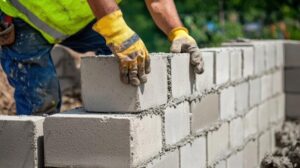Haircut San Francisco and styles have long been an essential part of self-expression, identity, and culture. Throughout history, different hair trends have emerged, each influenced by societal norms, personal preferences, and even practicality.

People choose their hairstyles based on various factors, including face shape, hair texture, lifestyle, and personal taste. The diversity in haircut choices has allowed individuals to find looks that suit their personality and enhance their overall appearance.
The process of selecting a haircut involves understanding the shape of the face, as certain styles complement specific facial structures. For example, some styles add volume and softness to angular features, while others help create a more structured appearance for rounder faces. Hair texture also plays a crucial role in determining the ideal cut. Those with straight hair may opt for styles that emphasize sleekness and precision, while individuals with curly or wavy hair often seek cuts that enhance their natural volume and movement. Layers, bangs, and varying lengths can all contribute to creating a balanced and flattering look.
Trends in haircuts and styles often evolve, influenced by cultural movements, celebrities, and fashion trends. Classic haircuts remain timeless, with many styles retaining their popularity for decades. Some individuals prefer short styles for their low maintenance and practicality, while others embrace longer styles that offer versatility. The choice between a bold, edgy look and a soft, romantic style depends on the individual’s personality and how they wish to present themselves to the world.
Styling techniques also play a significant role in enhancing the impact of a haircut. The use of tools, such as curling wands, straighteners, and blow dryers, allows individuals to experiment with different textures and shapes. Hair products further contribute to the desired look, providing volume, shine, or hold, depending on the need. Many people choose to change their hairstyle to mark a significant life event, express a shift in their personal identity, or simply refresh their appearance.
Hair maintenance is essential in preserving the integrity and style of a haircut. Regular trims help prevent split ends and keep the shape of the cut intact. Proper hair care routines, including cleansing, conditioning, and moisturizing, ensure that the hair remains healthy and manageable. The frequency of trims and treatments varies depending on the hair type, with shorter styles often requiring more frequent upkeep compared to longer styles that can grow out more naturally.
Cultural significance is another fascinating aspect of haircuts and styles. Throughout history, different civilizations have used hairstyles as symbols of status, identity, and tradition. Some hairstyles are deeply rooted in historical or religious practices, while others have evolved as statements of individuality and rebellion against societal norms. The connection between hair and personal identity remains strong, as people often associate certain styles with specific lifestyles, professions, or attitudes.
Hair trends may shift over time, but the importance of a well-chosen style remains constant. The ability to experiment with different looks allows individuals to express creativity and adapt to changing personal preferences. Some people embrace bold transformations, frequently altering their haircuts and colors, while others stick to a signature style that defines their image. Whether subtle or dramatic, each haircut tells a story and serves as a reflection of personality and self-perception.
The emotional impact of haircuts should not be underestimated. A new hairstyle can boost confidence, provide a fresh perspective, and even serve as a form of self-care. Many individuals find that a well-executed haircut gives them a renewed sense of self-assurance, making it an essential part of their grooming routine. The act of getting a haircut itself can be a therapeutic experience, allowing people to step away from daily stresses and focus on themselves for a moment.
The versatility of haircuts and styles ensures that there is something for everyone, regardless of age, gender, or personal aesthetic. Some prefer classic styles that have stood the test of time, while others embrace contemporary trends that push the boundaries of conventional beauty standards. The ability to adapt a haircut to suit one’s lifestyle and preferences makes it a dynamic aspect of personal grooming.
As people continue to explore different ways to express themselves through hair, the future of haircuts and styles remains ever-evolving. Innovation in hairdressing techniques and advancements in hair care products provide even more opportunities for creativity. The desire for self-expression through hair will continue to drive new trends and inspire individuals to experiment with their look. Regardless of the changing trends, the significance of a well-styled haircut will always remain an integral part of human culture and personal identity.
Beyond aesthetics, haircuts and styles also play a practical role in everyday life. Some people opt for short, low-maintenance styles to save time on daily grooming, while others enjoy the creative process of styling their hair in different ways each day. Factors such as climate, professional requirements, and lifestyle choices often influence haircut decisions. For instance, people living in warm regions may prefer shorter styles to stay cool, while those in colder climates may opt for longer hair for added warmth.
Haircuts can also serve as a powerful means of reinvention. Many individuals choose to change their hairstyle as a way of marking a fresh start or celebrating a milestone. A drastic haircut after a major life event, such as graduation, career advancement, or personal transformation, can symbolize growth and renewal. The act of cutting one’s hair can be deeply symbolic, representing a shedding of the past and an embrace of new beginnings.
The relationship between hair and identity is particularly strong in youth culture. Younger generations often experiment with unconventional styles, vibrant colors, and daring cuts to stand out and express their individuality. Social media and pop culture play a significant role in shaping modern hair trends, with influencers and public figures often setting new styles that quickly gain popularity. The accessibility of hairstyling tutorials and products has also empowered people to take creative risks and customize their looks to suit their unique preferences.
Haircuts and styles are also deeply intertwined with traditions and rituals. Many cultures have specific hair-related customs that hold spiritual or social significance. In some communities, the first haircut is an important rite of passage, symbolizing maturity and growth. In others, specific hairstyles denote marital status, community affiliation, or religious beliefs. The historical and cultural aspects of hair further highlight its importance beyond mere appearance.
Another fascinating aspect of hair is its role in fashion. Throughout different fashion eras, hair has played a crucial role in defining a person’s overall look. From elegant updos to bold, avant-garde styles, hair has been a canvas for creative expression. Fashion designers and hairstylists collaborate to create runway looks that complement clothing and set new beauty standards. Hair trends often cycle through time, with vintage styles making comebacks and new interpretations of classic cuts constantly emerging.
While many people visit professional stylists for haircuts, others enjoy the challenge of styling their hair at home. The availability of high-quality tools and instructional videos has made DIY haircuts more common. However, achieving a salon-quality cut at home requires practice, patience, and the right techniques. Many prefer to trust experienced professionals to ensure precision and expertise in their chosen style.
As trends evolve, the importance of personal preference remains at the heart of haircuts and styles. Whether opting for a timeless classic or a bold new look, the choice ultimately reflects an individual’s personality, lifestyle, and aspirations. The world of haircuts and styling continues to grow, offering endless possibilities for self-expression and transformation. Each haircut is more than just a change in appearance; it is a statement of identity, a nod to tradition, and a step towards embracing one’s unique beauty.




